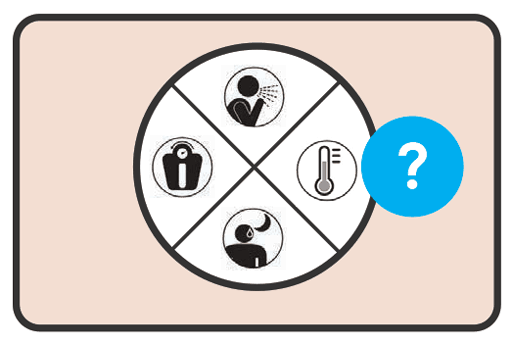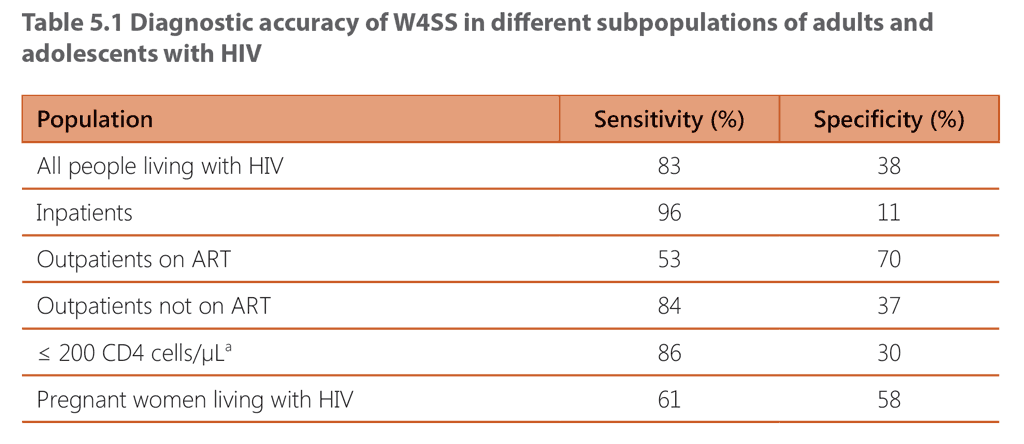Book traversal links for 5.2.1 WHO-recommended four-symptom screen

W4SS was first recommended in 2011, with an initial recommendation for systematic screening of all people living with HIV at every visit to a health-care facility. W4SS is a simple screening approach that is noninvasive, does not require infrastructure (technology, electricity, Internet) and is feasible to implement in any setting. The results of a symptom screen are, however, subjective and depend on the patient’s level of understanding and their willingness to share their physical experience of symptoms and on the provider’s interpretation of the patient’s self-reported symptoms. Thus, the quality and consistency of the W4SS is likely to vary among clinical settings.
Table 5.1 shows the accuracy of W4SS in different sub-populations of adults and adolescents living with HIV. The latest evidence review for the 2021 guidelines showed that W4SS has relatively high sensitivity in adults and adolescents living with HIV, 83%, but low specificity, 38%. The sensitivity of W4SS among outpatients on ART is relatively low, 53%, indicating that W4SS alone would not be sufficient to detect TB among people in regular ART care. W4SS also has low sensitivity in pregnant women living with HIV. It is relatively sensitive in outpatients not on ART (84%), indicating that W4SS is useful in finding people with TB among people who are starting HIV care, but the lack of specificity has implications for resources and rational use of diagnostic testing.

In view of its exceptionally low specificity among medical inpatients, W4SS is not a suitable tool for screening in this population, as the resulting high positivity rate renders it clinically useless for indicating further care. Given the severity of the disease and the need for rapid action in this acutely ill population, other tools may be necessary.
Nonetheless, W4SS is an essential part of the clinical examination of most subpopulations and is the most accessible screening tool at all levels of the health system. It can be repeated as often as necessary, while more intense screening strategies might be used less frequently, such as at annual intervals check-ups. Familiarity with W4SS is already widespread in many HIV services as a result of capacity-building and supervision. It also has an important role in ruling out TB disease due to its high negative predictive value in most settings. This is important in the preventive TB care pathway of people with HIV who would benefit from TPT in the absence of TB disease.
For more detail, see Web Annex B of the screening guidelines.
ᵃ Indicator of advanced HIV disease
 Feedback
Feedback